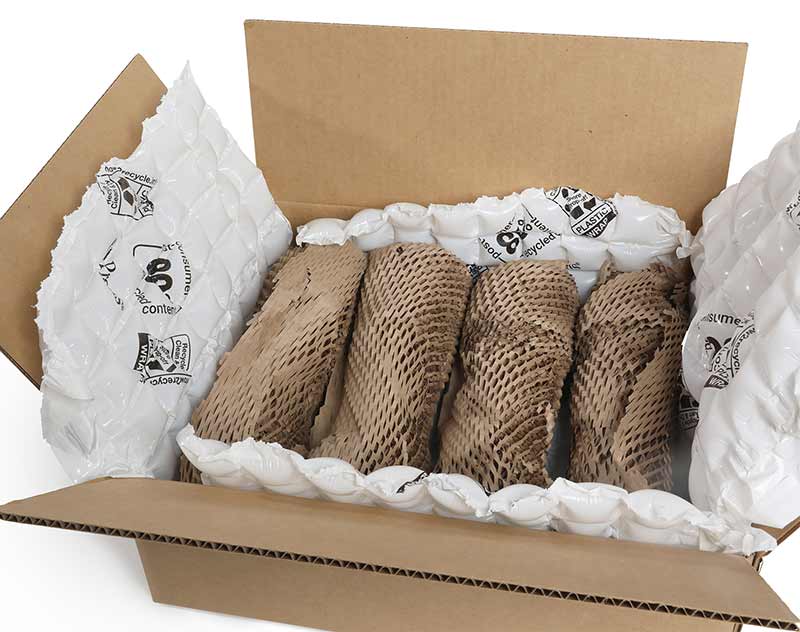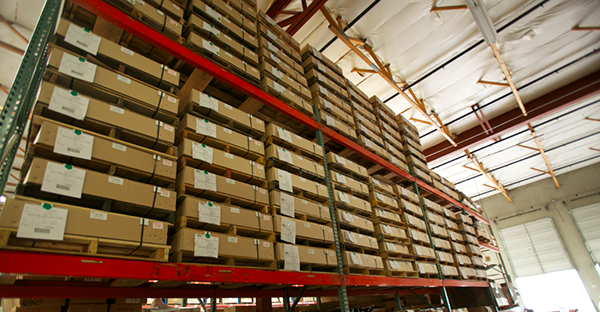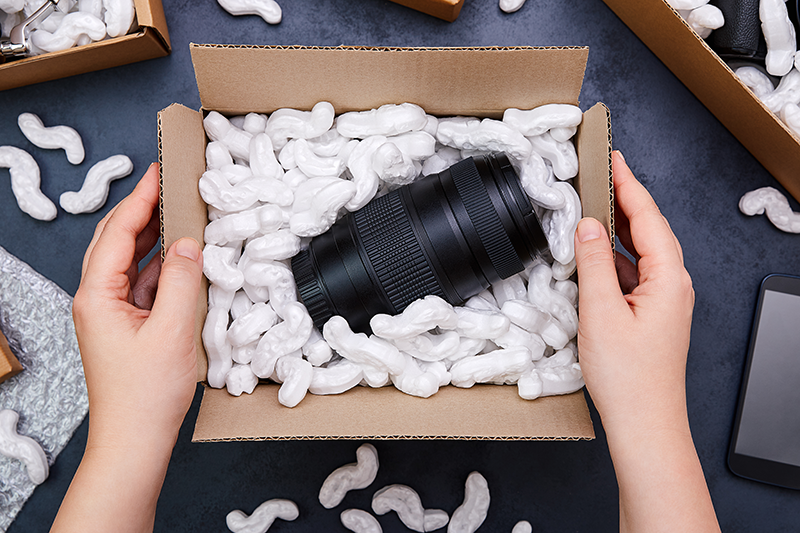How to Select Stretch Wrap
What is stretch wrap?
Stretch wrap is a flexible film that can be stretched and wrapped to hold items together. Also known as stretch film, this supply item is commonly used to wrap pallets of boxes so that the pallet load is held together securely during transport.
Stretch wrap is manufactured in a wide variety of sizes and thicknesses to satisfy many different use cases and price points. You can purchase specialty stretch films that are vented, include UV protection or anti-static properties, in opaque or clear styles, and more. Taking into consideration your entire product lifecycle, load preparation processes, and packaging budget can help you determine what variety of stretch wrap will best fit your needs.
There are two main styles of stretch wrap: cast and blown. Cast stretch wrap, manufactured using a cast extrusion process, is the most common stretch wrap style. Stretch films of this type are economical, offer excellent clarity, require less force to stretch, and are high cling. Cast stretch wrap is not as strong as blown stretch wrap and does not offer as great of holding power. This is because cast stretch wrap has less memory and tear resistance.
Blown stretch wrap, manufactured using a blown extrusion process, is stronger and has more stretch memory than cast stretch wrap. As the more durable option, blown stretch wrap offers superior holding power and tear resistance. This type of stretch film is typically the more expensive choice and could be overkill for everyday wrapping scenarios.
Why is stretch wrap important?
When palletizing products, stretch wrap is used to wrap the boxes and pallet together so that they act as a single unit during transport. Stretch wrap plays a vital role in product protection, not only by securing your product to the pallet but also by discouraging tampering.
Considering the many types of stretch wrap that are available, this packaging product can also extend the life of your product and protect it from unique types of damage that it may be susceptible to. For example, if you are shipping medical devices, it may be very important to use anti-static stretch wrap to protect your products from static build up that could lead to costly malfunctions and damage. If you ship any type of product that will be stored outside or in natural lighting for an extended time, UV stretch film may offer valuable protection against exposure to the elements.
How is stretch wrap applied?
Stretch wrap can be applied by hand or machine. If your business is palletizing more than 15 loads per day, we recommend installing machinery to automate the wrapping process. Although this comes with an initial investment, it will save you money over time by optimizing your material use, reducing manual labor costs, and speeding up your production line.
To apply stretch wrap by hand, begin by pulling out 8” – 12” of wrap off your role and forming a “rope” by squeezing the ends together.
Tie the rope around one corner of your pallet and tuck under your product to secure. Walk around your pallet, stretching the wrap around the load as you go. Wrap the bottom layer 2-3 times and work your way up.
Take care to get the most stretch out of your wrap. Not only will this use the least amount of material, extending the life of your roll, but more importantly it will create the most secure wrap around your products.
If you stretch your finished wrap away from the load and it does not spring back taut, you did not stretch it tightly enough. This could lead to your pallet becoming loose during shipment and boxes falling off.
The Economics of Stretch Wrap
When buying stretch wrap for your business, it is important to consider total cost of ownership and not oversimplify the individual line items in your packaging program as separate entities. If you only consider price point, saving a dollar today could sometimes cost you two tomorrow.
While everyday 80-gauge film may be appropriate for most use cases, if your product is particularly fragile, heavy, or has unique needs based on its lifecycle like those discussed above, you may want to consider spending more upfront on a heavier duty or specialized stretch film to avoid costly product damage and returns or replacements down the line.
If you’re not sure which type of stretch wrap is best for you, The Packaging Advisors at The BoxMaker are ready to help. Existing clients are encouraged to reach out to your representative for a consultation. If you do not yet have a representative, please request a quote here.
Subscribe
Share this post
Similar Articles

Paper, Plastic, or Foam: Selecting the Right Protective Packaging Materials
Learn how to select the right packaging materials to protect your product, brand, and the planet.

Why Use Pallet Strapping for Storage or Shipping
Discover the benefits of using pallet strapping to secure your product for storage or shipping.

Choosing the Right Void Fill for Shipping Boxes
Choosing the right void fill for your shipping boxes and product needs is key to minimizing damage a …
